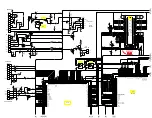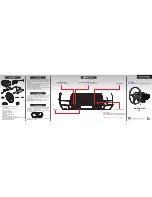
3-25
3.6.10 Detecting Abnormal Temperatures of the Thermal Head
To protect the thermal head and to ensure personal safety, abnormal thermal head temperatures must
be detected by both hardware and software as follows:
!
Detecting abnormal temperatures by software
Design software that will deactivate the heat elements if the thermal head thermistor (TH)
detects a temperature 80
°
C or higher (thermistor resistance RTH
≤
3.80 k
Ω
), and reactivate the
heat elements when a temperature of 60
°
C or lower (RTH
≥
7.45 k
Ω
) is detected. If the thermal
head continues to be activated at a temperature higher than 80
°
C, the longevity of the thermal
head may be shortened significantly.
!
Detecting abnormal temperatures by hardware
If the control unit (CPU) malfunctions, the software for detecting abnormal temperatures may not
function properly, resulting in overheating of the thermal head. Overheating of the thermal head
may cause damage to the thermal head or may cause burns to the user upon contact.
Always use hardware in conjunction with software for detecting abnormal temperatures to
ensure personal safety. (If the control unit malfunctions, it may be impossible to prevent
damage to the thermal head even if a detection of abnormal temperature is detected by
hardware.)
Using a window comparator circuit or similar detector, design hardware that detects the
following abnormal conditions:
(a) Overheating of the thermal head (approximately 90
°
C or higher (RTH
≤
2.79 k
Ω
)).
(b) Faulty thermistor connection (the thermistor may be open or short-circuited).
If (a) and (b) are detected, immediately deactivate the heat elements. Reactivate the heat
elements after the temperature of the thermal head has returned to normal.
















































